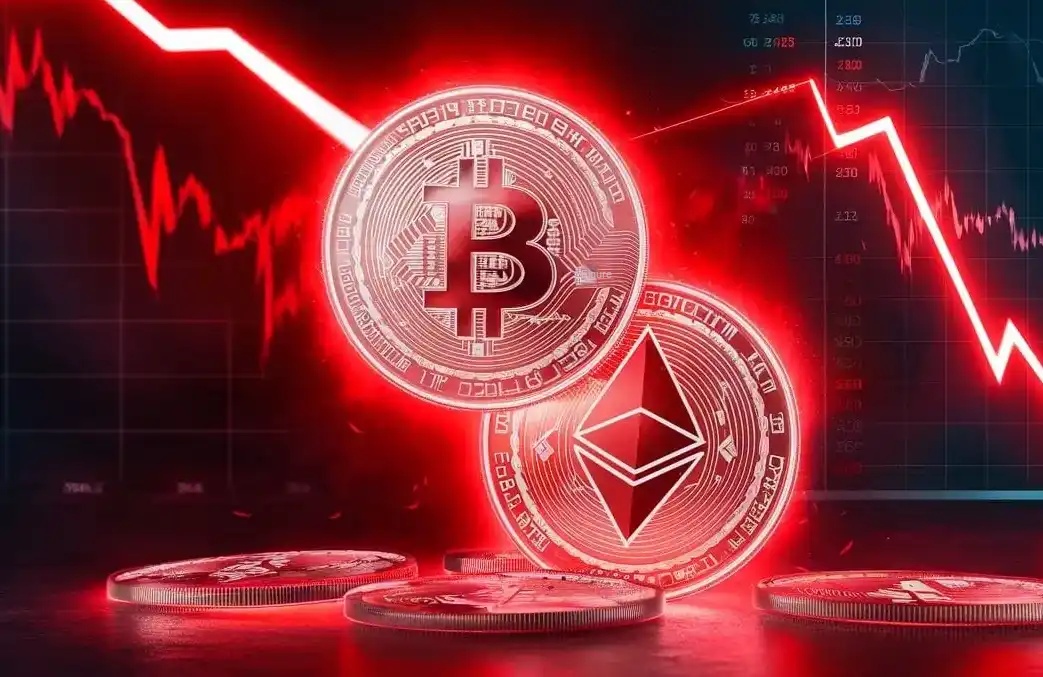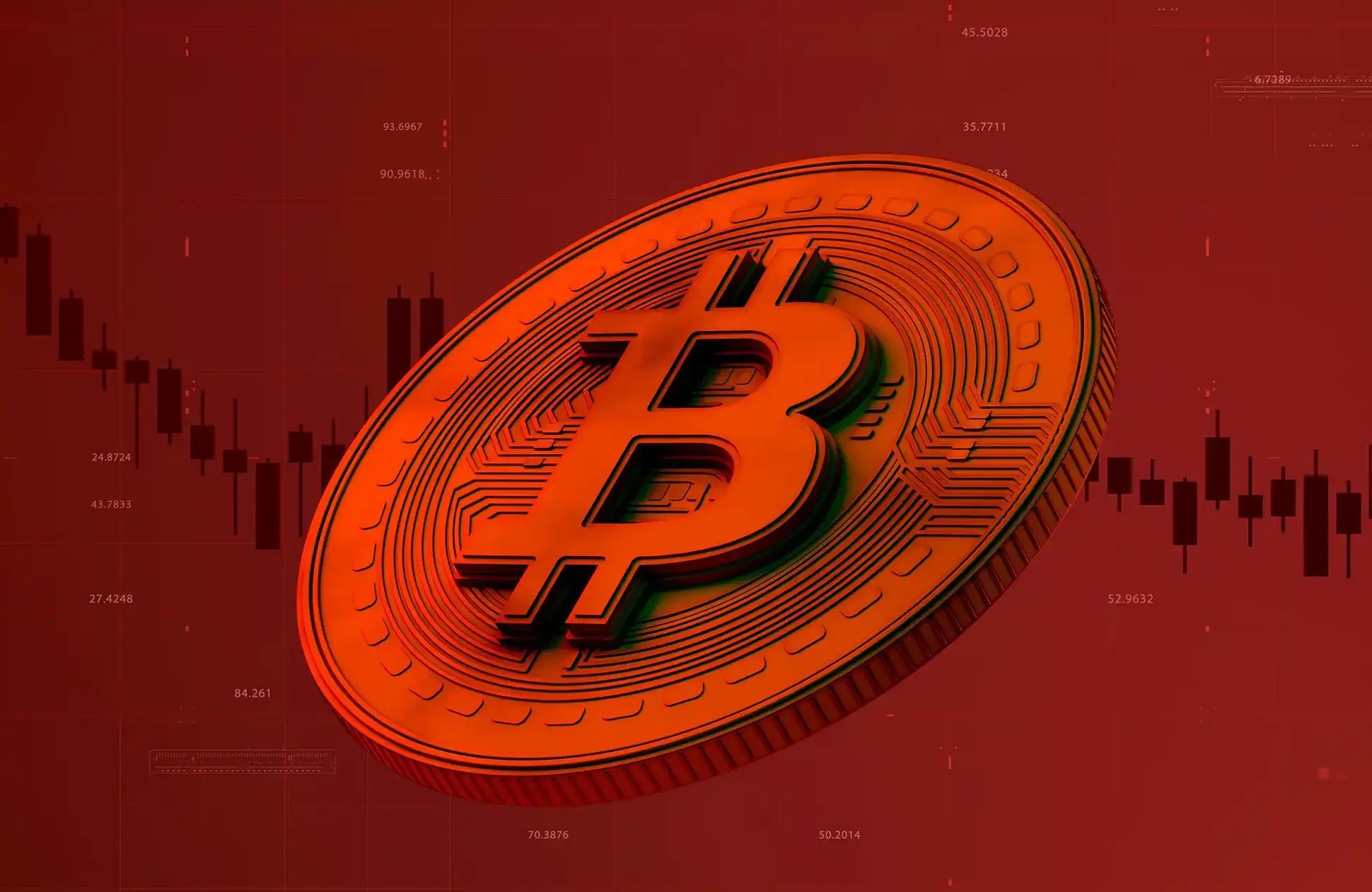What did CZ say during the first 3 hours of the "10.11 Wash Trading"?
Source: CounterParty TV
Translation Source: Ethan, Odaily Planet Daily
Editor's Note: In the early hours of October 11th, just three hours before the cryptocurrency market welcomed a historic crash, CZ (Changpeng Zhao) appeared on the podcast show CounterParty TV hosted by crypto community broadcaster Threadguy.
At this moment, just a step away from the market's "bloodbath moment," BTC was still holding above $120,000, with emotions still immersed in the afterglow of the new high. However, just a few hours later, 1.6 million people were liquidated, with a total liquidation size of $19.3 billion, setting a new record; altcoins across the board experienced a waterfall decline, with 80% to 90% drops densely appearing in the candlestick charts.
"1011," following "312" and "519," has become another timestamp that must be written into crypto history. In the few hours before all this happened, CZ was discussing Meme, BNB ecosystem, Perp DEX, industry divisions, and builder beliefs live on air.
Below is the original interview content, translated by Odaily Planet Daily for readability, with some content edited for brevity.
Host: Excellent, I'm grateful you could join us. It feels like your recent activity on Twitter is the highest ever, like you're firing on all cylinders.
CZ: Actually, I was more active even earlier, especially during the years when I was running Binance full-time. But indeed, there has been a lot of information this week, so I've posted more. I'm flying around a lot now, so I don't have as much time to post usually, but things are more concentrated these days.
Host: You've just recently come out of jail and returned to Twitter in full force. You previously mentioned that Forbes article about your net worth, although you said the number was overestimated, objectively, you are one of the most influential people in this industry. So at this stage, what is your goal? What drives what you're doing now?
CZ: I've never been a particularly money-driven person. Binance grew too fast, so fast that I didn't go through the wealth accumulation process that ordinary people do, step by step earning money and learning to enjoy wealth. In the first few years, we were always firefighting, and then we had to deal with the U.S. regulators, those were very stressful years.
I come from a humble background and have never been accustomed to a luxurious lifestyle, but I feel it's fine; my life's functionality is sufficient. As long as the clothes can be worn and the chair can be sat on, it's enough for me. I wear a Garmin sports watch that costs $300, and that's enough. I don't buy luxury cars, watches, or yachts, nor do I follow the wealth path of "earning ten million to buy a car, one hundred million to buy a house, two hundred million to buy a boat." I was catapulted directly from "zero" to the cover of Forbes. However, my wallet did not suddenly gain billions of dollars, and I didn't engage in massive cash-outs, so my perception of wealth is different from what ordinary people imagine.
Therefore, I don't feel the need to "prove myself again," nor am I fixated on labels like "multiple successful entrepreneurial ventures." Doing Binance is enough for me. In this endeavor, I haven't misled investors or users. I've fulfilled my obligations to BNB holders, our team members, and platform users.
I have taken on the responsibilities I should, including those in the legal realm, and I have faced them head-on. The time spent in prison actually allowed me to see many things anew. You will clearly realize: first, health is paramount; second, human connections are key. Food and a bed may be missed, but they come second.
Even before going to prison, I had made it clear that I would not return to managing the Binance exchange; I am merely a shareholder. I asked myself: What do I want to do in the future, and what things can continue to excite me? The answer I came up with was: helping others.
I believe humans are biologically wired to derive intense satisfaction from "assisting one's own kind" as long as they can survive. I no longer need to be anxious about survival, so my question has become: How can I maximize my help to others?
I no longer care about "reputation" because my reputation has already been tarnished by the judicial process, so it is no longer purely pristine to me. However, I still greatly value "trustworthiness" – I have not harmed users; that is my bottom line.
Power? I have stepped away from the operational aspects of the Binance exchange. Money? I can't possibly spend it all, and I have no material pursuits. So, what matters to me now is whether, when I look back in old age, I have devoted myself wholeheartedly to helping others and done something truly valuable.
Education is one answer – if we can build a globally open and scalable digital education platform, that would be a tremendous lever. After my release, I rested for a few months, then returned, focusing on the BNB Chain ecosystem and Binance Labs (we have now rebranded to completely segregate it from the centralized exchange) to help more entrepreneurs succeed.
Do you ask me if I feel a sense of responsibility to "steer the fate of the industry"? I don't have that grand narrative. I don't believe any single individual can shoulder the responsibility for an entire industry. The crypto industry will have its ups and downs, will experience winter, but each bottom is higher than the last. I am not a leader; I am merely a participant who continues to contribute.
Host: I don't mean to place the future of the entire industry on your shoulders, but I am indeed curious. Before diving into the specifics of Meme, Perp, and the technical ecosystem, I'd like to start with a more macro-level question. The current state of Crypto Twitter, especially those deeply involved in on-chain transaction culture, feels a bit strange. On one hand, Bitcoin has just hit a new all-time high, and even though it's retracing a few percentage points today, technically it's still in a bull market. But when you open your timeline, the sentiment is as chaotic as a bear market. Yet, from a macro perspective, the industry has actually achieved a historic breakthrough. The Trump administration openly embraced crypto, BTC, SOL, ETH all have ETFs, most traditional financial institutions globally have started using stablecoins, and Crypto has effectively permeated the world's mainstream structures. In theory, this is a "moment of victory." However, in the on-chain world, especially the part dominated by retail investors, there was a Meme trend, but now there is no longer that kind of centralized fanatic consensus. Everyone is asking, "What should we still believe in next? Where is the guiding star on-chain?" How do you view this issue? What is your optimistic vision for the future of the on-chain space?
CZ: I understand the kind of "chaos" state you're talking about, but I wouldn't consider it a bad thing. Instead, it usually means the industry is getting larger.
Back in 2013 and 2014, we didn't even call this industry the "crypto industry"; back then, it was only Bitcoin, and we called it the "Bitcoin industry." In 2017, Ethereum emerged, ERC-20 brought about the ICO frenzy, projects surged, and the industry saw its first explosion. In 2021, DeFi and NFTs appeared, and after the peak period, they transitioned into normalcy but didn't disappear.
The round you mentioned with ETFs, Memes, stablecoins, RWAs... the coexistence of these things indicates that the industry's dimensions are expanding, the ecosystem's layers are becoming finer, and different populations are beginning to have different faith entry points—this indicates that the volume is large enough.
Indeed, this has also led to a more pronounced differentiation—the liberal camp of the old OGs, the institutional faction of traditional finance, the new on-chain Meme players, the value-oriented Builders, Bitcoin Maxis; each group has its own language. This is inevitable; if Web 3 is a truly decentralized ecosystem, it should involve conflict, divergence, competition, and collaboration.
I personally am accustomed to a state of chaos. I am not someone who seeks order; I enjoy an open environment, I relish the unknown, and I appreciate places with various voices. So, I believe that the industry's current sense of "division" is actually a sign of maturity—it indicates that we are no longer following a single-line narrative but have entered an ecosystem-level structure.
You might ask, what is the North Star? I believe the North Star is no longer a specific asset or a single narrative, but rather—an increasing number of people continuing to enter, a larger ecosystem accommodating multiple narratives, all while still being built. This, in itself, is the direction.
Host: It's quite counterintuitive now—Bitcoin just hit a new all-time high, only to drop by 1%, and the entire Twitter timeline felt like it was crumbling, everyone was shouting "it's over." This might just be the norm in the 2025 crypto world. Speaking of Bitcoin, about five months ago, you were on Ferox's podcast (also a shoutout to him, that episode was great), and you gave a range of Bitcoin price expectations: $500,000 to $1 million. How do you see it now? Do you still maintain that prediction?
CZ: I still believe that this is a reasonable range. But first, I want to emphasize that I am very cautious about price predictions—no one really knows where the price will go, everyone I've met who truly understands the industry will not firmly assert that the price will reach a specific point. Predictions are just viewpoints, not definitive conclusions.
If we look at historical cycles, Bitcoin has a cycle every four years, and most high points occur between October and December after the halving. Considering the current market situation, Bitcoin is already very close to the historical high. This 1% to 2% fluctuation, to us veterans who have experienced a 50% drop one day and a 50% rise the next, is truly considered "child's play," and one could even say it is "stablecoin-like fluctuation."
Therefore, whether it's Bitcoin or the entire crypto market, I still maintain a strong optimism.
Host: I've noticed a change. Back in 2024, you actually had a relatively reserved attitude towards meme coins. You've mentioned on multiple occasions that you're not a supporter of meme coins, which also sparked a lot of discussion at the time. But recently, you seem to be much more positive about meme-related content, showing a certain level of excitement. What changed in between? Why does your current attitude towards meme coins seem different?
CZ: I'd like to clarify that I am not "against meme coins." I've never been against them; I just said I personally wasn't that enthusiastic about them. I'm not a meme coin issuer myself, that's a fact, just like I'm not an NFT player either.
I have never bought an NFT, and the number of meme coins I've bought is very low. Although I support projects in the entire industry, the only cryptocurrencies I truly hold are Bitcoin and BNB, basically just these. I haven't heavily invested in project tokens on other chains, but I support the development of these ecosystems. The funds from the Binance ecosystem have also supported many projects on various chains, and I personally maintain close communication with the developers of many chains.
The reason why I don't buy art, NFTs, music, or collect those things is not because I'm against them, but because—I'm just not that type of person. I have a functional and technical mindset; I like tools that I can directly use and don't seek collectible attributes. I don't wear luxury watches either; I use a smartwatch that shows the time and tracks my activities. I play sports, I run, that's just my lifestyle. So it's not that I reject those things, but I'm not part of that culture.
However, if users in the ecosystem like it, if this thing has been validated on other chains, has a market, I'm more than willing to support it. Every day, I receive messages from a dozen project founders—some are doing Launchpads, some are creating stablecoins, some are building new Meme platforms. I look at the teams, and if I believe the team is reliable, I will assist.
So I've never been anti-Meme; it's just that previously Meme culture didn't have a structural ecosystem on the BNB Chain, so I wouldn't deliberately get involved. But now that users are here and developers are here, we should welcome them, provide infrastructure, and support their on-chain development.
In fact, Meme coins have a strong demand for the underlying chain's infrastructure; they require extremely fast information feedback, real-time capabilities, asynchronous execution, and rapid on-chain transactions, posing a challenge to the foundation. Seeing these needs, I will encourage teams to upgrade the chain's performance so that the ecosystem can accommodate this high-frequency culture.
However, up to today, I still have not bought any Meme coin for "investment purposes." I just purchased a little to understand this culture, as part of an experiential process, rather than seeking tenfold or twentyfold returns. That's not my way of playing.
Host: In this recent Meme wave with BNB, there's been a particularly interesting phenomenon of a sudden emergence of a large number of "Chinese tickers," and the entire Western community is asking: What's going on? How do you view this phenomenon?
CZ: I think it's entirely coincidental. The origin of everything is actually quite random. In February of this year, I tried using CrossWallet to buy a small Meme on-chain for the first time. I found the interface very simple, and I understand private keys. However, I was hit by a MEV attack, the transaction failed, and the community laughed at me for a long time.
I was playing with a very small amount, maybe just fifty to a hundred dollars, just to experience the process. But every time I do something, everyone pays special attention. Later, they even started creating memes around my dog, my avatar, anything I said, everything became a meme. During that time, I had to be careful about everything I posted because as soon as I did, the community would immediately turn it into a meme.
There was a time when I was even afraid to tweet because it was too easy to be memed. But then I thought, whatever, let them do it. However the community wants to meme, let them meme. And it actually created an atmosphere.
Especially recently, on the day of the Mid-Autumn Festival, I originally posted a "Happy Mid-Autumn Festival" message. Then I deleted it and reposted, changing it to "Happy Mid-Autumn Festival, post your Meme pictures." Since the Mid-Autumn Festival is a Chinese holiday, the content flooding the community was all Chinese memes, mooncakes, Chang'e (the Moon Goddess), the moon, and various Chinese tickers were generated in this way.
For example, something like "Zhao Chang'e," changing my name to a feminine form and playing with Chinese pronunciation, which only Chinese users can understand. But this cultural collision actually created a unique style that influenced the entire community. Many Solana users also flocked to the BNB chain because of this. There are even Western players starting to learn Chinese just to understand these memes. None of this was planned; it just naturally happened.
Host: Thank you for your explanation. So, I'll ask one last question related to memes, and then we'll move on to Perp and more trading system-related topics. My original question was — What different thing does BNB need to do to surpass Solana in on-chain culture and trading narrative? But when I was looking at tweets, I saw a point from Frank DeGods, who said that BNB might have a structural advantage that Solana doesn't have — a complete vertical stack: Memes launch on platforms like Fourmeme → If they perform well, they move to Aster → If they perform even better, they might go to Binance Alpha → and ultimately, they might even have the opportunity to list on Binance Spot. He said no other public chain can provide a pathway from on-chain native transaction behavior all the way to a centralized exchange's high-traffic entrance. Was this pathway intentionally designed? Do you think this is a unique advantage of the BNB ecosystem?
CZ: This was definitely not intentionally designed. In the past six and a half to seven years, I have been busy with the operation of centralized exchanges. I did not plan ahead for the rhythms of BNB Chain at all; it completely evolved naturally.
After I was released from jail, I decided not to spend my time on the specific operation of Binance but to focus on the on-chain ecosystem and decentralized infrastructure. As the world's largest exchange, Binance indeed naturally provides a traffic tower. But this does not mean that it only serves the BNB ecosystem. Binance will still list tokens from various chains, including Solana's Meme.
Indeed, people within the BNB ecosystem do feel more "closer to the exchange" because they hold BNB themselves and are more willing to interact with Binance's system. This is not an exclusive advantage, but it does create a kind of community stickiness.
If you look at the flip side, for example, Solana's Phantom wallet only supports Solana and not BNB. On our side, TrustWallet and CrossWallet both support multiple chains, so Solana users can enter the BNB ecosystem, but Phantom users cannot directly connect to BNB. This actually shows that our ecosystem structure is more open.
So, what you mentioned about a "vertical stack" is indeed a tangible advantage, but it is not a walled garden or a deliberately constructed political structure; rather, it is an organically formed feedback system.
Host: We've finished discussing Meme. Now let's talk about another core narrative of this cycle—on-chain perpetual contracts, also known as perp DEX. I'd like to start with Aster. Why do you think that in this cycle, perp DEX has suddenly become one of the main narratives? And why has Hyperliquid been able to surge to the forefront so quickly?
CZ: In fact, perp DEX is not a brand-new concept. In the early days, there was dYdX and other projects that did similar things. Hyperliquid's advantage lies in its on-chain trade recording, vault utilization, and they have done a great job with their marketing, sparking a lot of discussion. For instance, they had James Wynn place a billion-dollar on-chain order, which created a lot of buzz, bringing in traffic and attention.
But I always believe that traders instinctively desire trade privacy. On Wall Street, all seasoned traders do not want their orders to be instantly exposed to the market, and even afterwards, they do not want others to be able to deduce their strategies. Once a strategy is inferred, it becomes susceptible to targeted attacks and front-running. Therefore, in my twenty years of experience in the trading industry, this fully transparent on-chain order system actually goes against the logic of professional trading, and I find it hard to fully endorse it.
In June of this year, I tweeted that if someone could create a "hidden order" or "private matching" perp DEX, that would be a direction to take. On that very day, I received pitches from thirty projects. The Aster team was the first to come forward and say they could implement this feature. There were also teams claiming they could create a completely private matching engine, and we directly invested in several of them.
So I believe that at the current pace of development, regardless of whether it's in this cycle or at the latest in the next four-year cycle, the on-chain perpetual trading volume will approach or even surpass that of centralized exchanges.
Host: So, how big is the market space for perp DEX really? What conditions need to be met to truly "flip" centralized exchanges, or even surpass them?
CZ: There are two paths happening simultaneously here. On one hand, as new users enter crypto, they will definitely start from centralized exchanges. They want to use email, password, customer support, rather than directly deal with private keys, MEV, and various address strings, so CEX is still the main entry point. Right now, more than 90% of the global population has not yet entered crypto, but once they do, their first stop will definitely be Binance or other CEXs.
But as users gradually understand on-chain logic, learn to custody assets, manage private keys, and start seeking earlier-stage, higher-risk, higher-leverage products, they will naturally migrate to DEXs. Because DEXs can provide things that CEXs won't list, whether it's new tokens, memes, or early-stage immature assets.
So I believe that, in the long run, twenty years, thirty years, or even fifty years from now, everything will move onto the chain. It's just that traditional finance won't disappear overnight, and centralized exchanges will exist for a long time due to banking channels and compliance structures. The two forms will coexist for a long time. But in the end, decentralization will become the main battlefield.
Host: So the user path is: first enter CEX, get familiar with the market, then enter the on-chain deep end. To make Aster truly surpass Hyperliquid, what conditions are needed?
CZ: Actually, if you look now, sometimes Aster has already surpassed Hyperliquid in local time periods. But I think they are not completely on the same track, they are different types of use cases. For example, Hyperliquid is a fully public order book, suitable for users willing to disclose their trading activities. Whereas Aster tends to introduce private orders, a more open native cross-chain deposit method, for example, native Solana assets can directly participate, accepting assets from more chains.
Many people mistakenly think it "belongs to the BNB Chain," but in fact, it is very open. Both projects are very new, having been launched for just over a year, with Aster even iterating from ApolloX, having some history, but still in a very early stage. The first place doesn't always have to be the first forever; sometimes the second place runs faster because it can directly evolve its features.
Host: This is similar to OpenSea's journey, where being the first doesn't necessarily guarantee the final victory. So why doesn't Hyperliquid just directly add a 'Dark Pool Order' feature? If they did, would it directly erase Aster's differentiated advantage?
CZ: They can certainly add it, and I even suggest they do. However, exchange competition has never been about a single feature. While a feature can be copied, what truly sets platforms apart is their long-term product philosophy, user protection mechanisms, crisis response strategies, and ultimately which Layer 1 you will migrate to and whether the public chain ecosystem will revolve around you to build a complete toolchain. These are the decisive factors, not one or two features.
Host: So, if we were to assess which perp DEX is stronger, what should be the core metric to look at? Recently, DefiLlama stopped tracking Aster for a period due to the inability to distinguish real volume from incentive-driven volume, and some say that current trading volumes are unreliable.
CZ: I wouldn't rely on a single metric to judge. Trading volume and user numbers combined may be a framework, but it still doesn't fully explain the issue. When there are airdrop incentives, users will continuously place orders to farm the airdrop. This falls under 'incentive-driven activity'. Is it considered fake volume? They did indeed pay fees and place orders; it's just that their motivation is different.
During the era of centralized exchanges, we also encountered the same problem, distinguishing real trades from wash trades. If the platform receives a transaction fee, as long as both parties pay the fee, from the exchange's perspective, it's a 'real trade'. However, if there are zero fees, then it is certainly wash trading behavior, which complicates matters.
Therefore, I believe that incentive statuses should be labeled, allowing the market to judge for itself—such as 'There is an airdrop incentive in this phase'. Users can easily understand at a glance, without the need to completely exclude data. As for how users choose, ultimately, they will still go to where the liquidity is deepest, the fees are lowest, and the execution is most stable; this will always be the core.
Host: How do you think users can determine if a platform's liquidity is genuine? Is there a blunt but effective way?
CZ: Actually, there is. Back when I was on Wall Street, we were very direct—we would take a sum of capital, let's say $1000, place an order on each of two platforms for $500, see how much each could execute, the slippage, and the fees. Then, move the assets to the same wallet to visually compare the difference in the final token quantity received. Even if users don't systematically perform this action, after a few experiences, they will develop a preference. In the future, they will conduct larger trades on smoother platforms. This is the most authentic market voting mechanism.
Host: If you are 23 years old now and just entered the scene in 2025, which track would you choose to play the game? Would it be the blockchain, AI, infrastructure, or entrepreneurship?
CZ: I would give some possibly controversial advice—if you have a secure exit plan, you should join a startup team earlier rather than sit in a stable position long term. The real opportunity is in startups, not in mature companies. But the premise is that you should have the worst-case scenario in mind, so that even if everything goes to zero, you can still survive.
So the key is not "whether to go all in" but "whether you have a safety net to withstand failure." If you have a Plan B, then you should go for it. If you don't have a Plan B, then you should first build your skills before taking the leap. The window of opportunity does not wait for anyone.
Host: One of the narratives I dislike the most in the crypto community is "you only have a brief window of a few years, go all in, or you'll forever be a bottom-tier worker." The famous GCR tweet said that a person only has an extremely short time after graduating from college to go all-in; otherwise, they will never turn their life around. Many people, due to this mindset, end up selling in 17 seconds on Solana, insisting on betting on a "once-in-a-lifetime opportunity." What's your take on this time pressure? How much time do young people really have to "succeed"?
CZ: I am a counterexample myself. I founded Binance when I was close to 40 years old, and now I'm 48. I spent nearly two decades doing various jobs, coding, building systems, and later in management. I had a good career, but entrepreneurship wasn't achieved in my twenties.
Many people think that entrepreneurs are very young, but in reality, statistically, the average age of most successful entrepreneurs is over 40. However, I also believe that if you want to start a business, you should try earlier; the earlier you make mistakes, the better. But don't crash into the first wall—you can fail, but you must have the ability to bounce back.
I have seen many outstanding founders who are intelligent and have strong execution capabilities, but because they are too anxious and want to "succeed" too quickly, they lose control of their mentality. So, don't be overly anxious, don't let "time anxiety" ruin your judgment.
Host: Do you have anything you would like to say to the community before we wrap up? Like what you are currently busy with, or any direction you hope everyone pays attention to?
CZ: I don't have much to add. I just want to say that the crypto industry will never be a smooth path; it will always come with shocks, volatility, and controversies. But truly strong teams, communities, and developers will continue to build amidst these upheavals.
I myself have gone through many extremely difficult times along the way, but I have always believed that as long as we are doing the right thing—no scams, no harming users, no getting lost in the dark abyss, but instead continuously building—then whether it's a Meme coin, a utility token, or on-chain securities, every path has value.
I am a builder, and as long as we keep building, this industry will surely become better. This week may be full of ups and downs, but from a longer-term perspective, these emotional fluctuations are just a blip on the chart; we just need to keep moving forward.
Welcome to join the official BlockBeats community:
Telegram Subscription Group: https://t.me/theblockbeats
Telegram Discussion Group: https://t.me/BlockBeats_App
Official Twitter Account: https://twitter.com/BlockBeatsAsia


 Forum
Forum Finance
Finance
 Specials
Specials
 On-chain Eco
On-chain Eco
 Entry
Entry
 Podcasts
Podcasts
 Activities
Activities
 OPRR
OPRR








